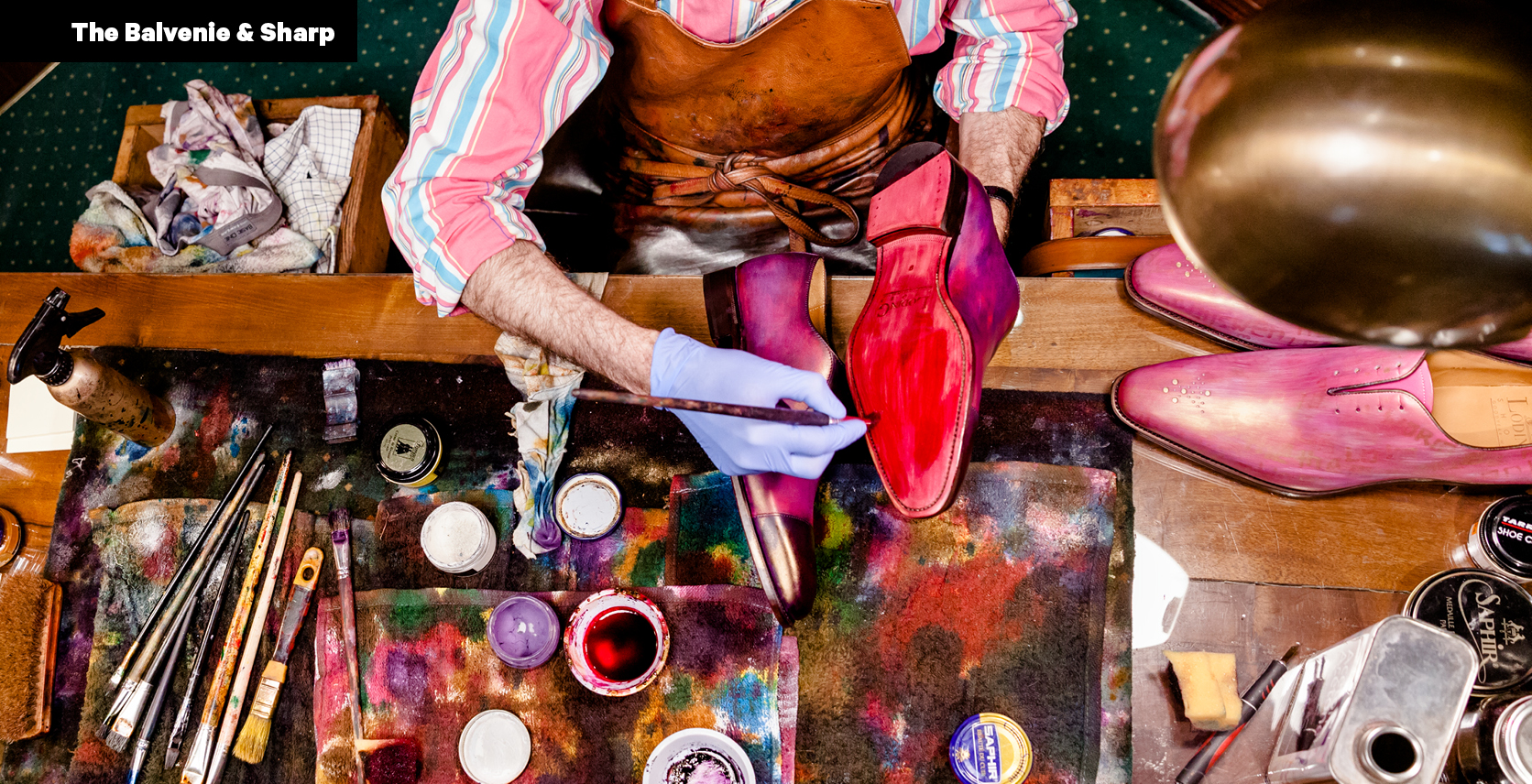These Toronto Artisans Craft Some of the World’s Finest Bespoke Shoes
THIS STORY WAS SPONSORED BY THE BALVENIE.
Homo faber” may not be the first words that come to mind as you gaze at your bespoke leather shoes, but they should be. Latin for “Man the Maker,” the term denotes a centuries-old concept that human beings can control their fates and environments through tools.
Lately, it’s an idea that’s taken off in Canada, where a new generation of craftsmen have devoted their lives to making beautiful things by hand, using the knowledge and tools passed on through generations. And while the traditions of their respective crafts haven’t changed for centuries, what has is a newfound passion for the process, not just the result. Whether creating a pair of shoes or a cask of The Balvenie, these craftsmen understand that the art of doing — of respecting old-world artisanship over mass production — can bring us deeper understanding of the world around us. Not to mention a damn fine end product.
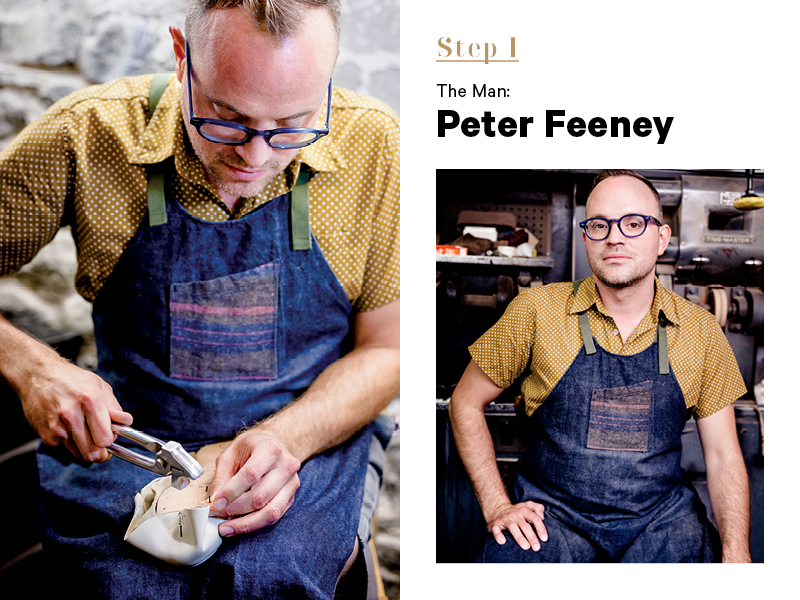
The Craft: Shoemaker
The Tool: Lasting pliers
The Website: peterfeeney.ca
They say being a true artist is about surrendering yourself to a craft. Peter Feeney has taken that axiom to heart. In 2006, he left behind a career in film to become a cordwainer (the old-fashioned word for shoemaker). He even moved to Florence (and learned Italian) to assume an apprenticeship under seasoned masters in the art of creating handmade shoes with some pliers, a hammer, nails, thread, and leather. “The tools I use basically haven’t changed in the past century. And neither have the techniques,” says Feeney. “It’s unusual for people of my generation to commit themselves to learning skills that have stood the test of time like that. But I want the things I make to last 30, 50, 100 years into the future. That takes a lot of passion and the right tools and techniques. It requires patience and a fair bit of stubbornness. There’s no shortcut to making something durable, to making something timeless.”
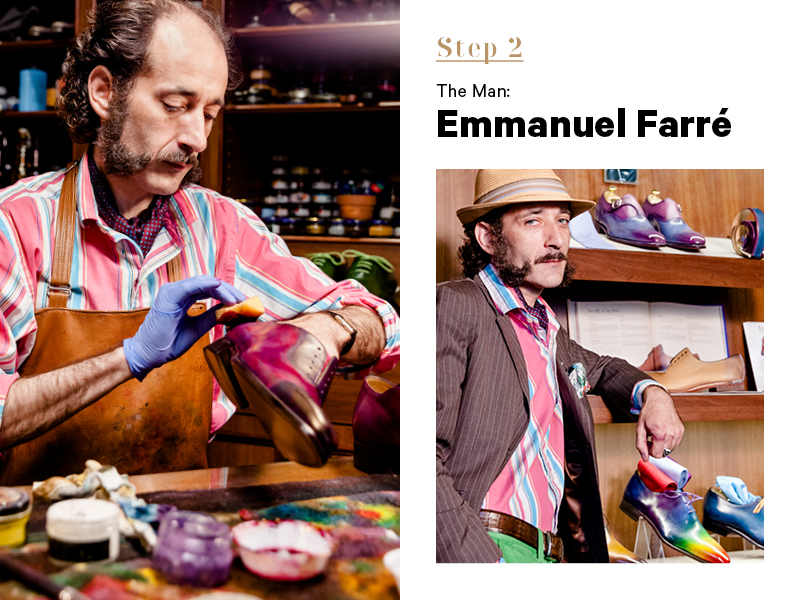
The Craft: Patina Artist
The Tool: Patina brushes
The Website: maisonpatina.com
Emmanuel Farré has been obsessed with the finer points of life since growing up admiring his mother’s one-of-a-kind antiques in Toulouse, France. Translating that passion into patina art, he went on to gain global recognition working alongside the Theatre National de Toulouse and Noreve Saint Tropez. He’s since moved to Canada, bringing intricate richness and depth to our footwear with his unique dye-based alchemy. “Without the dyes, there is no magic,” says Farré. “I couldn’t do it without my brushes, of course, but at the end of the day it is the colour, and my touch, that transform a mundane leather piece into something special. For certain projects, I like to use natural pigments like blue indigo from Morocco or yellow from Italy, as it was done in ancient times. The colours are much more powerful that way.”
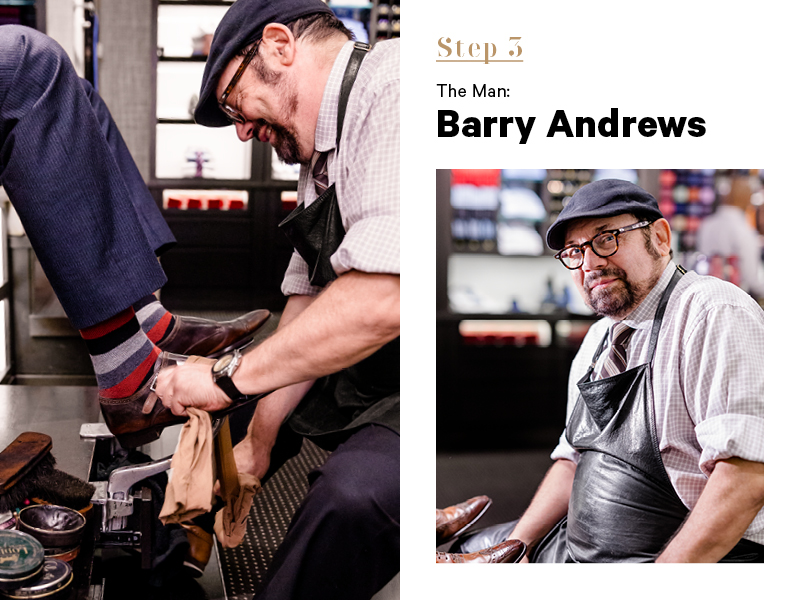
The Craft: Shoe shiner
The Tool: Women’s nylons
The Website: loding.fr
The outbreak of WWI turned the art of spit polishing one’s shoes from a mere fashion statement to a vital skill reflecting one’s character: ship-shape shoes meant a ship-shape life. For over 40 years, Barry Andrews has devoted his life to respecting that tradition, shining shoes in a way that harkens back to the days when a cadet’s arsenal invariably contained some polish, a cloth, and a lighter. “I like using a military technique,” says Andrews. “I set my polish on fire, and when it melts down it gets nice and smooth, so I can apply it very easily with my fingers. It gives me maximum control. Then I give the shoe a buffing with a pair of nylons to bring up the shine. I’ll also do a spit polish using a cloth with a little water on it, which gives a glaze on the toe and heel. It’s all old-school. We don’t like fancy silicon sprays. Just beeswax-based polish and elbow grease.”
The Balvenie: 5 Rare Crafts of Whisky Making
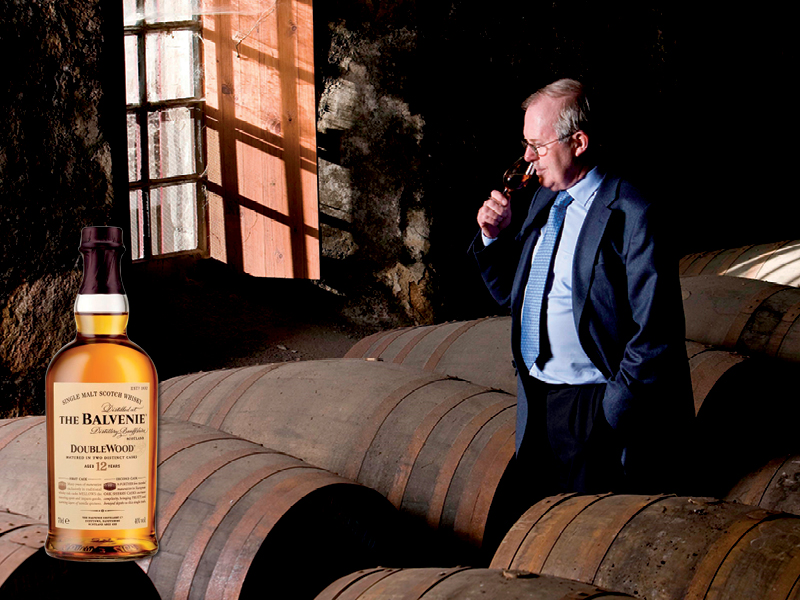
True craftsmanship is easy to recognize, but rare to find. Craftsmanship comes from skills honed over a lifetime. It comes from dedication to quality and tradition. When it comes to The Balvenie, there are 5 Rare Crafts that have always been an essential part of ensuring that every bottle of single-malt Scotch that leaves their Speyside distillery is of the highest quality: Barley Growing, Malting, Coppersmithing, Coopering, and the Artistry of its Master Blender.
The hand-crafted nature of The Balvenie has been preserved over generations by employing all of the 5 Rare Crafts on site at their distillery in Dufftown. Growing their own barley and keeping faith with a traditional malting floor ensures only the highest quality ingredients are used. Employing a resident coppersmith to maintain the stills and a team of coopers ensures every barrel is in perfect condition, aging the whisky to perfection. David Stewart, The Balvenie Malt Master for these past 54 years and one of the world’s most experienced practitioners of his craft, continues to preside over the all-important maturation process of this world-renowned artisanal whisky. thebalvenie.com
